Many books on Historic New Castle naturally lean heavily into historic photographs, of which there are many, highlighting this town’s deep roots. In Within Walking Distance: Historic New Castle, debuting this month and formally releasing in September, local photographer Frank Moriarty tells a broader story. With original photos, he has created a synthesis between historic retrospective and modern mosaic.
We caught up with the affable Frank at the Court House, above, then sat down at the Mercury Cafe & Teahouse, where the book will debut on Friday with a special price and signed copies available, as part of this month’s Art Loop (8/23).
Listen now, or read below, for Moriarty’s thoughts on his process, how creating this book compared with his past coverage of topics from classic cars to rock stars, and of course, New Castle’s charm. (We were also joined by Leigh Anne, the artist’s wife and enthusiastic publicist, though she left it to Frank to answer our questions.)
Thanks to both Mr. & Mrs. Moriarty for the opportunity to review the book ahead of publication, and to Frank for the great conversation. Please enjoy!
Note, this is City Topics’ first podcast... Please let us know what you think and whether you’d like to hear more local conversations in the future. 🎧 (If you want to listen on a preferred app like Spotify or Apple, it should be available there as well, within a day or two.)
Interview with Frank Moriarty (Transcript)
Recorded Friday, 8/16, in Historic New Castle, Delaware. The chatter and laughter of other, nearby guests at The Mercury can occasionally be heard in the background.
City Topics (CT): Within Walking Distance: Historic New Castle is a forthcoming photo book by Frank Moriarty, with hundreds of beautiful pictures of New Castle. And no doubt thousands more didn't make the cut.
Frank Moriarty (FM): Amen.
CT: So, I want to start by asking, what was your process like? I know you run and bike. Do you mix those outings with photography, or do you note cool spots and then head back for shoots? Before you sat down to do selection, basically, how did you get the collection?
FM: Well, it's interesting you would say that because I do often carry a camera with me on any type of expedition. The size and the weight of the lenses and everything would vary depending on if I'm doing just a photography trip, or if I'm just out and about hoping to catch something. And actually, a lot of times it'll be a case of I'll see something and then will want to, will get a vision of like, this would probably look much better this afternoon instead of this morning or, you know, if it's cloudy or not cloudy and try to sense the best time to go get something.
But a lot of times you're just capturing something that's right there at that moment. So, this started in 2019 after we moved to New Castle. It was about, within I'd say, six weeks of moving here, I got the idea that I'd probably like to do a book of it. So that would have been the summer of 2019, and it ran all the way to this year.
Over that time, I would shoot, you know, maybe 200 photographs on a trip around town and I would label it ‘Walk by the River, July 2021,’ or whatever. Unfortunately, I did not go through each folder and take out the likely candidates. So when it came time to do the book, the first thing I started was going through all the iPhone photos and they were categorized by month and year - went through pulled out anything useful out of those and then started in on the big cameras. And it literally took from October till April, almost every day, working on sorting through all that and I really learned a lesson. I mean, I do a lot of aviation photography and when I go to an air show, I'll come home with like 400 shots, but I'll pretty much right away pull out the good stuff. I wasn't doing that with these New Castle photos. So, it was a very imposing challenge.
CT: Gotcha. Well, to stick with the artist for a moment longer, this is not your first outing as a professional photographer. Much of your past work has dealt with fast cars and big stars like the Dodge Charger, Jeff Gordon, and the Boss. That's Bruce Springsteen, for the uninitiated. What was that like, and then how different was it turning your lens on a quaint little city like New Castle?
FM: Well, it's interesting because a lot of my music photography and actually a lot of the photography I've done for other books in the past, like on automotive development or so on, that was all done with film cameras. And of course, now we've all migrated to digital.
I had the opportunity to cover the last space shuttle flight. I was down at Kennedy Space Center that whole summer and I shot it on film. And I would say I was the only photographer using film down there. I mean, everybody had migrated over to digital at that point. But, you know, I thought it was appropriate because the space shuttle program had obviously begun in the film era. And I thought, if this is the last flight, why not document it the way the first flight was documented?
CT: Absolutely.
FM: So, that was an interesting challenge. And of course, in music photography, you're dealing with the lights and stage lighting and a lot of motion and everything. Whereas if I'm shooting a town hall, it's not going anywhere. So that's an advantage.
CT: So, the book that you've come up with has 14 chapters. Some are kind of the obvious categories; others are more abstract and artistic. Together they give it a nice flow and focus, I think. Of the many ways to break things up for presentation, how did you choose your topics? Were there some that you knew would have to be included, maybe some that emerged as you were reviewing your photographs?
FM: Yeah, absolutely. It was a case of, of course, you know you want the pictures of the Court House and the Arsenal and all the historic buildings that are here in New Castle. But I didn't want it to just be this like historic photography book. I wanted it to really kind of have a momentum of its own.
So, we start with a sunrise chapter. Then in between each chapter, there's a few pages of random pictures. And from that, we go into historic sites/sights - both spellings of sites. And that was where I wanted to really get the expected historic buildings done fairly quickly right at the beginning of the book, so that we could move away from that and get into life in New Castle.
And when you think about life in New Castle, it's everything from the ships on the river, interesting cars that go by, aircraft, the houses, all the variety of the houses. I wanted to be sure to include photography of all the homes, not just on The Strand and by The Green, but out from that. Because there's so many different kinds of houses here, and that's really one of my favorite chapters trying to catch, you know… I think I referred to it at some point as architectural kaleidoscope, because… it's so many different kinds of houses and everything. So it was, go through all of those things and then end, of course, with kind of obvious sunset and nighttime chapters at the very end of the book. But really, I wanted to establish the historic aspect, and then move into our lives here pretty much every day and progress on through like that.
CT: In the Historic Places chapter, you make extensive use of the historical markers for giving details about places. How much did having and including those markers play into your decision to go caption-less for the rest of the book?
FM: That was a big decision. I mean, I realized there was really no point in writing captions for the building when you can put a historic marker in that describes what the structure is, and also gives you a feel of the weight of its historical significance. So, you know, some of the churches don't have a historical marker out front, but you can make do with what signs they do have. And for each one of those structures, I would do one sign, a large picture of the structure, and then a small, detailed picture of some aspect of that structure.
So that was an interesting challenge, and it just felt to me like it was kind of a creative way to get through all those buildings and get them described without me having to do it. And then when we go into the ‘Signs’ chapter, this is a chapter of like, I don't know, 70 or 80 signs. You don't need a caption for them because they're signs.
CT: They say what they need… Signs is one of my favorite chapters, actually, along with Come Together and New Castle Residents. While the theme appears throughout the book, these really show that New Castle is, as your intro references and as you've already said here, alive today and not just a relic where people and wild creatures still happen to live. Why did you include the modern alongside the historic and how did you seek balance between those elements?
FM: That's actually what I think is interesting about Historic New Castle, is that there is that balance between the past and the history and what's going on today. And we occasionally see it in tensions among you know councils and citizens over, you know, should we do this, and no, we shouldn't do that because that's going to impinge on the historic values and everything. It's kind of a creative tension that goes on in life in New Castle, especially down in the historic area. And I think that is something that I wanted to express through the photographs, and the book and the feel of it and really have that.
There's always this overriding appreciation of the past and the types of buildings that there are and the feel of The Green and all of that, but there's still like life going on at the same time today. So that was a challenge, and I really wanted to maintain a focus on trying to do that.
CT: I think it comes through. So how did you select the title, Within Walking Distance, and what does it mean to you? Most but not all of the shots do come from the historic district or immediately around it. Did the concept kind of set a geographic boundary for you?
FM: It sort of did. I mean, I have a background of doing, like, long running, so my definition of what's within walking distance may be longer than other people's. But I think the furthest out area is down by the industrial park where I shot the moon coming up over the bridge. And, you know, down out that way, there's some good areas where you can photograph that kind of thing. But that still actually is within walking distance.
I think one of the things that we were so impressed with when Leigh Anne and I first talked about moving here, and pretty much right away, was we wanted a place where you could walk places and have a variety of things within walking distance. And I was struggling, actually, with the title for a while. But I was just sitting there one day, and it just kind of appeared. So, I knew better.
A lot of great songs have been written where the song just kind of made itself known to the writer. Keith Richards talks about that for the Stones all the time. And when that comes, you just grab a pen and accept the gift.
CT: Even with minimal words and no trace of politics, every work that purports to distill a place or idea is an editorial of sorts. What do you think your book says about New Castle?
FM: I think it says that it's an extremely unique place. And I refer to it several times as a unique American river town. And people do refer to it in those terms, you know, fairly frequently. But that's what it is, you know, to have this historic Delaware Street leading down to the Wharf, where we often have the Kalmar Nyckel and we have other ships sometimes that come in. [You] see these big freighters going by out on the water and the commerce of the river, which in the past here had very different economic benefits for the area through, you know, there were coal wharfs and the ferry and all those kinds of things. But time moves on, and it's evolved to what is currently doable as far as being financially viable and so on. So, I think there's a lot of that. It's just a question of accepting what things are now and figuring out how you can most easily depict it.
CT: Well, after years of work, it must be very exciting to have the book coming out pretty soon. Where will it be available and when?
FM: The book's going to be available first at the Mercury Cafe and Tea House on the Fourth Friday Art Loop, on August 23rd. The book's official release date is going to be September 13th, but we're doing this one night only early release so that people can come get discounted copies, get their copies signed for either themselves or as gifts.
Then our next event will be on September 13th, Friday the 13th, which is the official release date of the book. And we're getting the final details of where we're going to do that... We expect to have a two-week exhibition of prints from the book following that, and then close that on the next Fourth Friday Art Loop on the 27th of September, and then the next day we'll be at Art on the Green.
Meanwhile… BookBaby is the book production and printing company, and I worked with one of their designers. They host a very secure bookshop sales website where I have set up a page for the book.1 And we are selling it for the same 20%-off discount that we are selling it at the in-person event, so that lets people get it for a lot less than Amazon, which is going to be the list price. So it's better going through the Book Baby book site, and if people just do a search on Within Walking Distance: Historic New Castle, I'm sure the website will come up… We have a Facebook page set up under that same title, so if people want to check out that page, they can do that. That's also where I'm looking to post more photographs from the area as time goes on.
We're going to be talking next week with Mike Connolly at [New Castle Historical Society, which runs the city’s Visitor Center, in] the Arsenal about putting the book there. We're going to have postcards around that will be pretty much all over New Castle, hopefully, where people can… pick up and… have information on the website and everything on the back side. So, if you don't see the book itself, hopefully you will see media about it and be easily able to find it.
CT: Sounds good… My last question is, what's next? I know you are nominally retired, but you don't seem to be the sitting still type. Is there a next project ready to move to your front burner?
FM: Yeah, right now I'm keeping current with my aviation and spaceflight website, which is www.aerospaceperceptions.com. That's where I do a lot of my photography from air shows and aircraft and photograph Air Force One coming in and out of here, for the couple of months we have left of that.
Then I'm also starting work on a book of my 1970s rock photography, which I started shooting in, like, 1970-71, and throughout that period of time. A lot of bands like The Who and Jethro Tull and, you know, many, many others... Bruce Springsteen, I shot many times.
And I had a lot of interesting occasions doing photography for... I did photos for Peter Allen and Bette Midler's Harlettes, and all kinds of people. And that would lead to being in weird places in New York, at cabarets in the middle of the night. And people from Saturday Night Live would be showing up like Laraine Newman and Gilda Radner. So, it's going to be a pretty interesting photo book. That also is going to be a lot of work sorting through all those pictures, but I'm looking forward to doing it and getting it all digitized and getting it out there.
I'll be writing stories about each of the photographs, because it's a story about each one, where I was, how it happened. Photographing David Bowie and the Spiders from Mars, I had to take the camera apart and sneak it in my socks and underwear because there was no photography. And then rebuild the camera and then try to look where the lights were, so that if it hit the glass on the camera, make sure a security guy wasn't looking over in that direction. So yeah, there's a lot of funny stories about that period of time.
So that'll be coming up next probably.
CT: We’ll definitely be interested in some stories around that book.
FM: Yeah, it'll be something.
CT: Well, thank you very much for sitting down to chat.
FM: I appreciate the interest.
This text was transcribed electronically with human review.
Thanks for listening/reading!
If you enjoyed this feature, please forward or share to help others find it. If you’re new to City Topics, please subscribe for free below to receive more local feature stories and the monthly New Castle Digest by email. Have a great day!
Though inactive until Friday’s event at the Mercury (8/23), the website for the book will be: www.modernlistenerpublishing.com/newcastle.




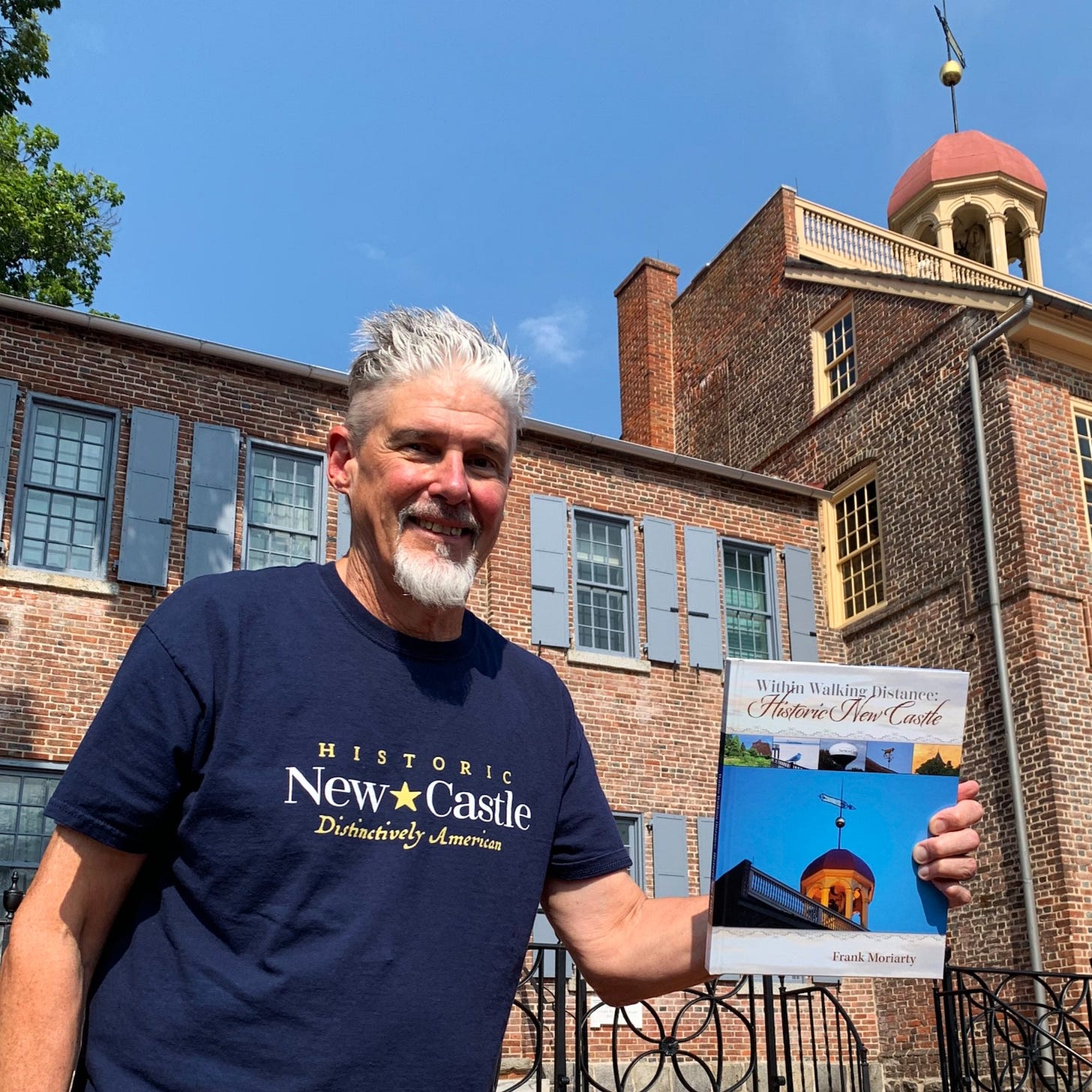
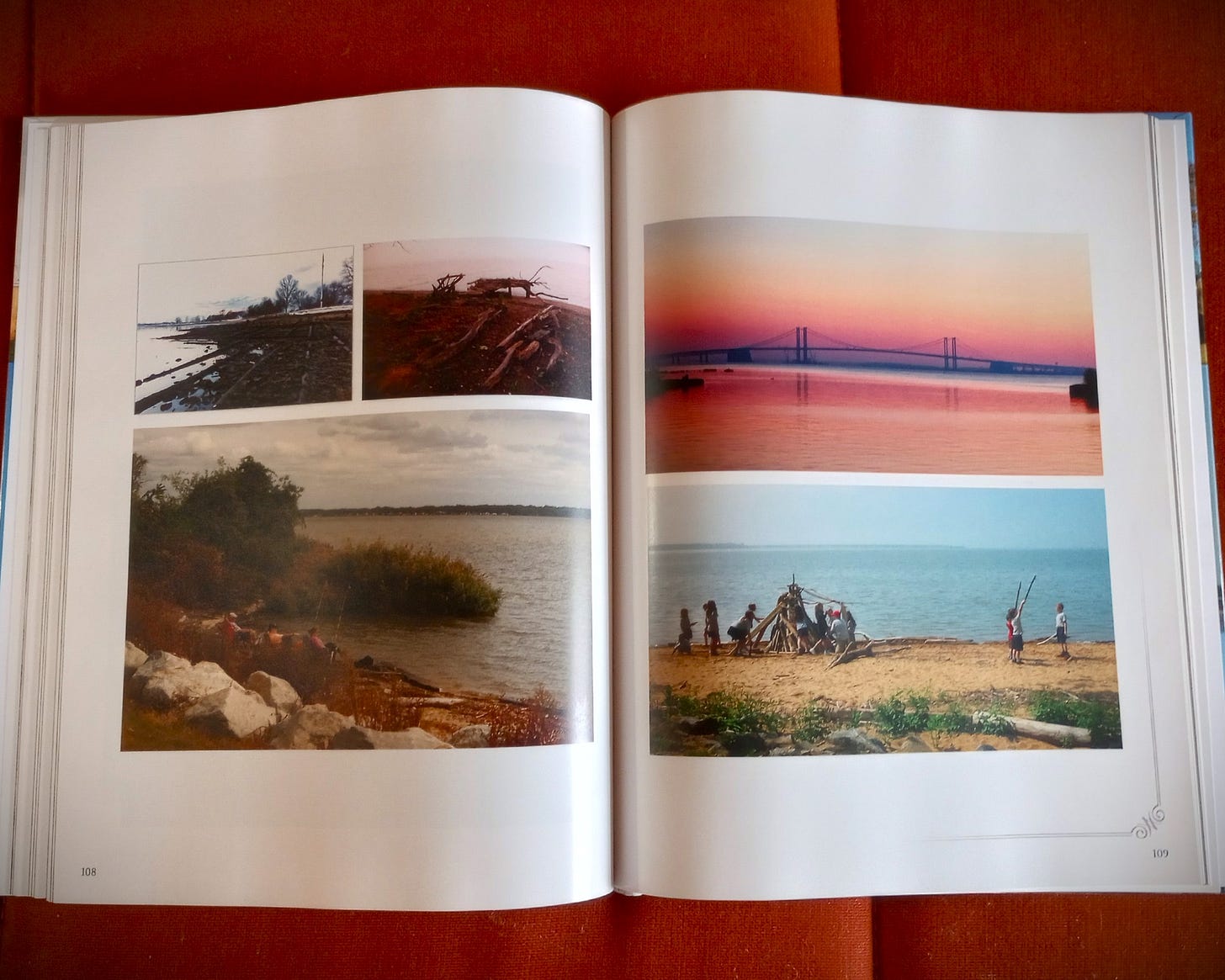
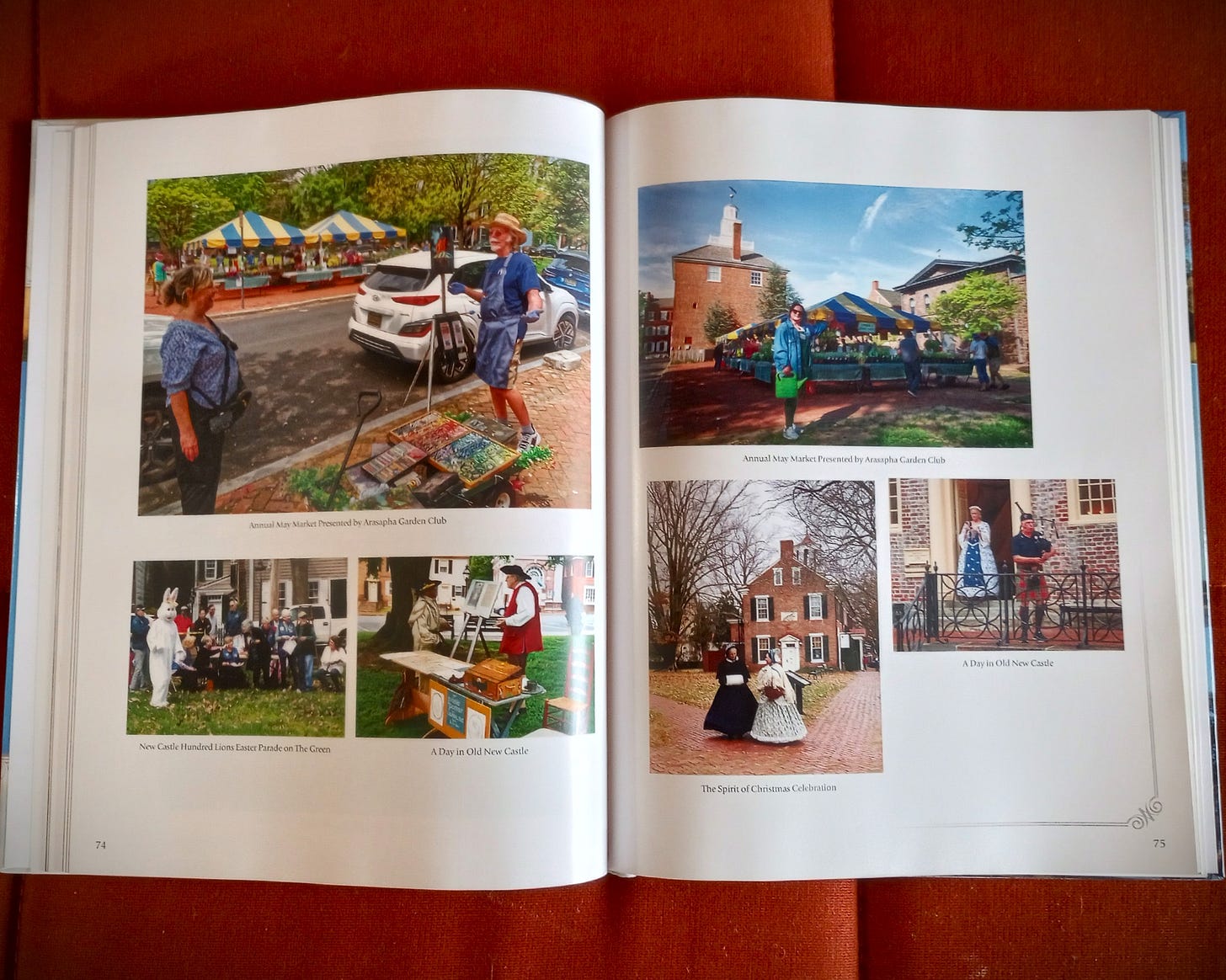
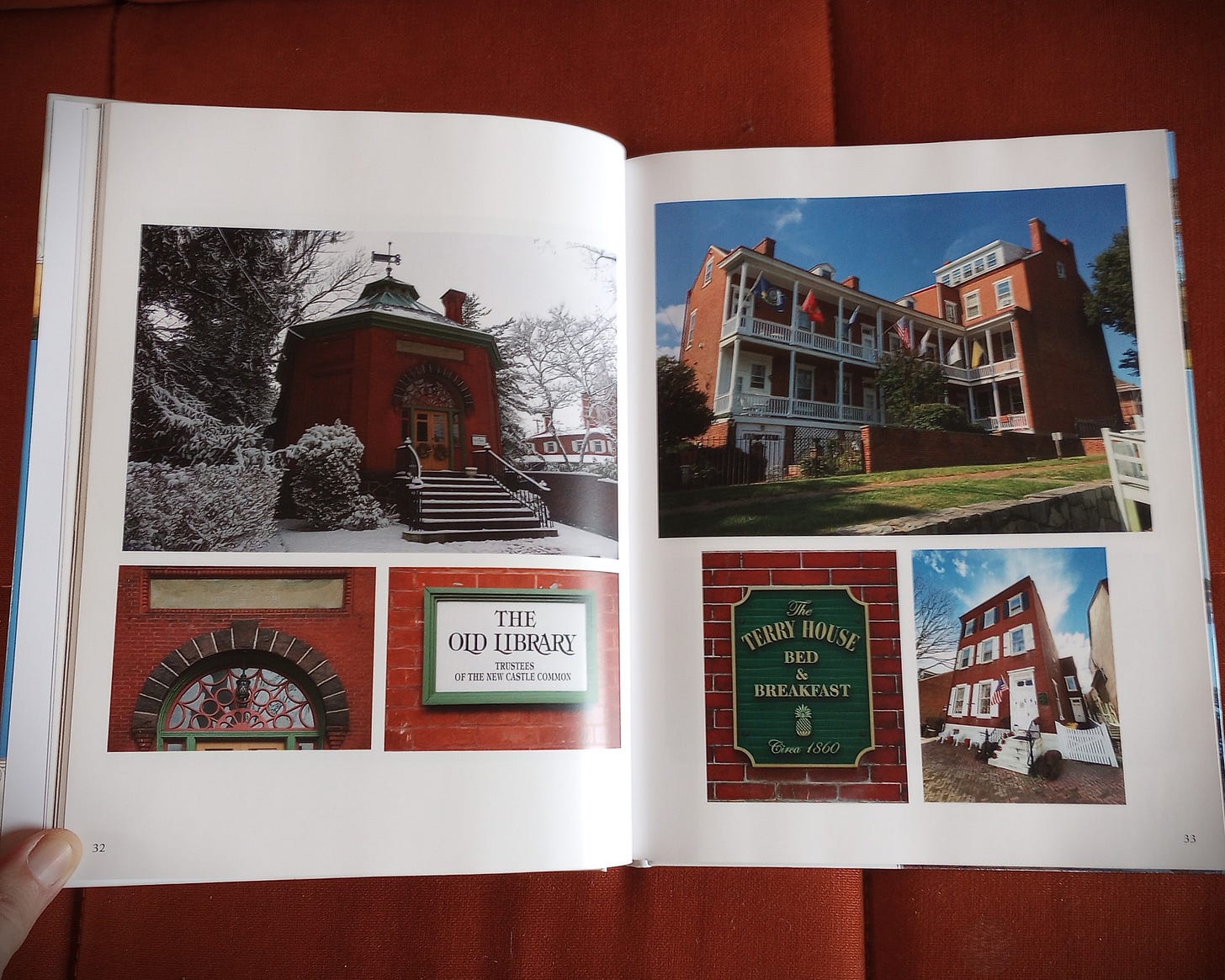
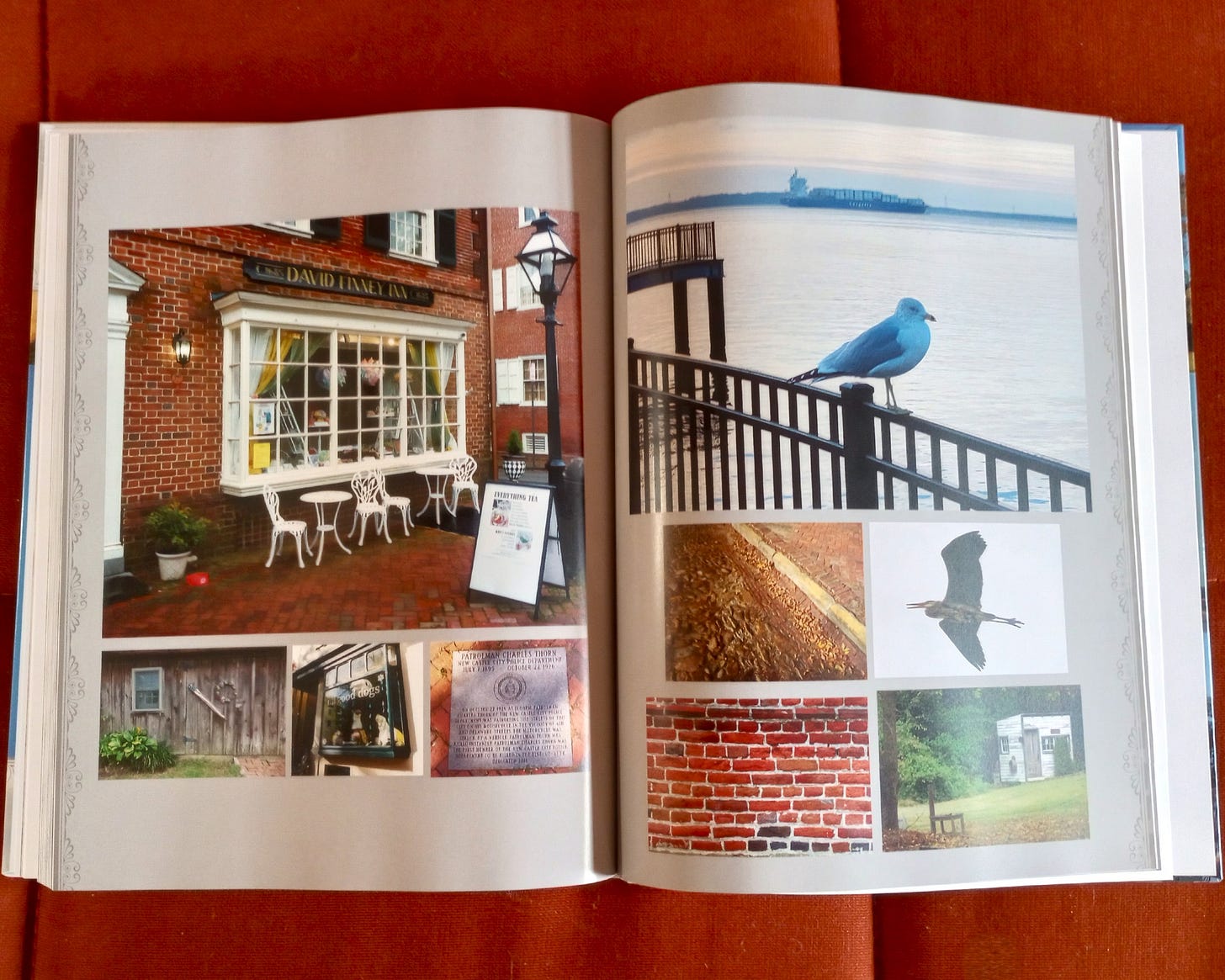

Share this post